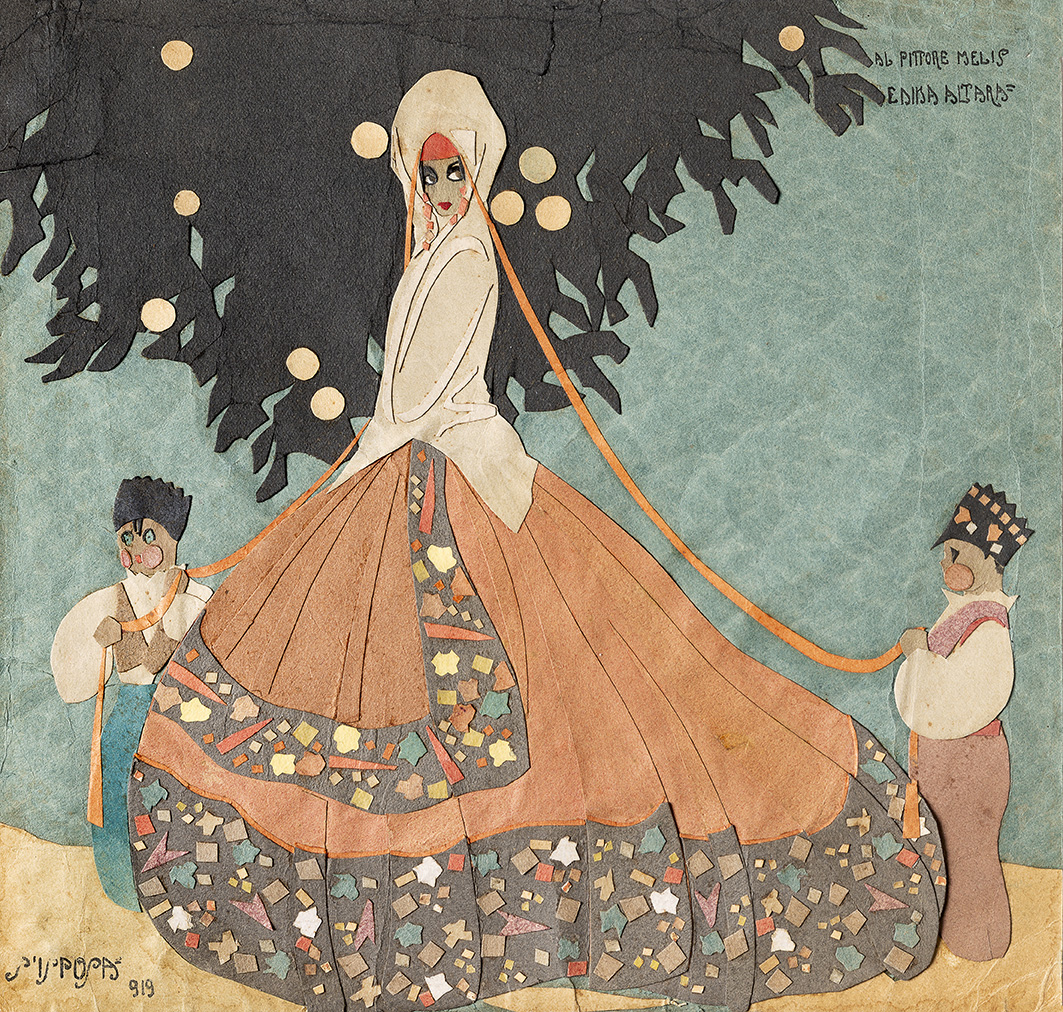Edina Altara, “S’isposa”, 1919, collage of colored papers, cm 23×24, MAN Collection
Edina Forbicicchia, as she was affectionately called by Paola Lombroso Carrara, aka Aunt Mariu, stood out from a young age for her creative talent and manual skills. A self-taught artist, she grew up in the bourgeois environment of early 20th-century Sassari.
In the early years of the century, artists and intellectuals in Sardinia were working together to reconstruct an accurate image of the island, aiming to define an identity that would break away from stereotypes of a wild island, a hideout for bandits, and, in general, a derelict land. Among them was the master Giuseppe Biasi, whom Edina knew well, as he was a family friend.
It was he who first noticed Edina’s creative spark and suggested she exhibit her work in 1915 at the Sardinian section of the Roman Secession, an exhibition that, however, did not materialize. The following year, she redeemed herself by participating in the exhibition of the Civil Mobilization (Sassari), again invited by Biasi, and later at the Toy Trade Exhibition (Milan), where she caught the attention of the critics.
Her artistic journey began with the creation of collages (not to be forgotten is the beautiful “Nella terra degli intrepidi sardi” now at the Quirinal, purchased by Vittorio Emanuele III in 1917) and evolved over time, establishing herself in other fields, such as illustration.
The collages, including the small work at the MAN, which is one of her most successful pieces, testify to Edina’s modernity and her lively, creative mind. In good condition, S’isposa (23×24 cm) is signed and dated by the artist and was created as a tribute to “painter Melis” (Melkiorre, n.a.), who was at the time the director of the Rivista Sarda, with whom Edina collaborated starting in 1919.
Small cutouts of colored paper decorate the two bands of the bride’s dress, a garment that does not follow the traditional Sardinian model but already reveals a certain modernity, surpassing tradition and blending in almost exotic influences. The figure is completed with a tall headdress from which two orange ribbons emerge, held up by two little pages with amusing pink cheeks.
The woman’s gaze is emblematic, so typical of the decorative style of those years, of which the leading exponent was none other than Melkiorre Melis.
The museum delved into the figure of Edina and her husband, Vittorio Accornero (until 1934), in an unforgettable exhibition in 2022, where even the setup was designed as a fairy-tale-like stage, inspired by the lives of the two artists.
Rita Moro

